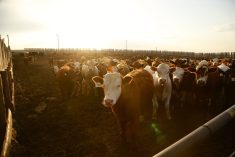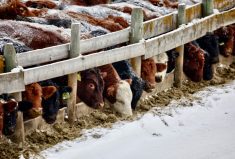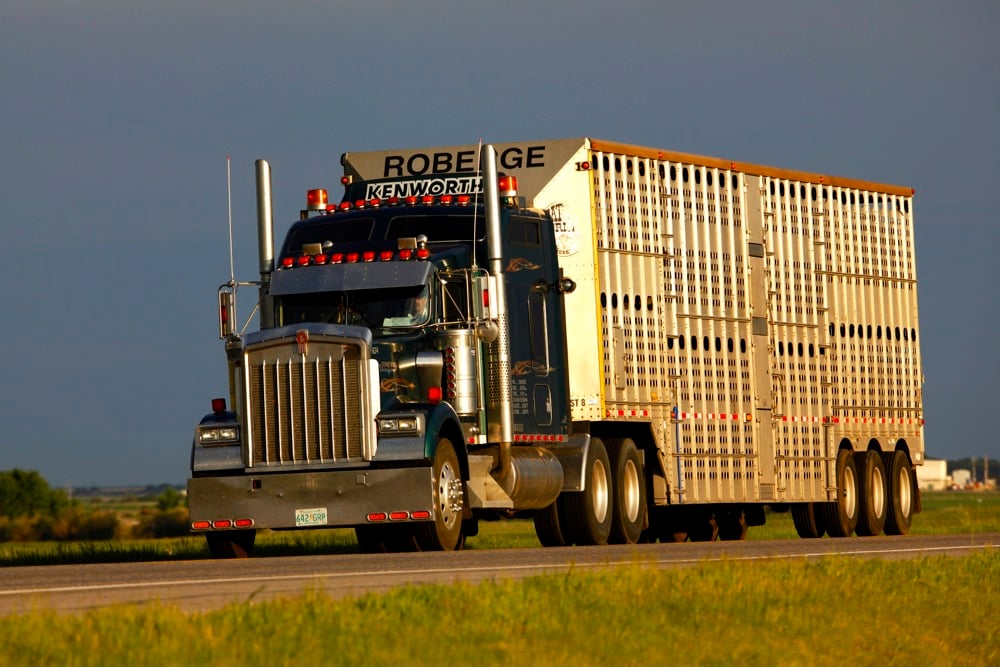The price of crude oil has fallen a long way since hitting $110 in July 2013 — and the debate on how long this drop will last, and what it will do to the economy, will continue for some time to come.
The plunge in oil prices will create winners and losers — the question is whether Alberta agriculture and the beef sector will be in the former or latter category.
The fall in prices obviously impacts the bottom lines of oil companies, and large-scale layoffs are already underway. Communities dependent on oil production will be hit hard, as will the Alberta government, which loses $215 million in royalties for every $1 drop in the price of a barrel of oil. New spending on health programs, roads, schools, and other government investment will likely be frozen.
Read Also

Farm equipment sales sector sees significant structural changes
Farming equipment sales have been declining for a number of years now, and one industry professional believes structural changes in the industry are needed to curb that trend.
The drop in oil prices has also affected the value of the Canadian dollar and this directly impacts food and agriculture. Anything that is imported will cost more, including fruits, vegetables, imported distillers dried grains for cattle feeding, and imported beef from the U.S. For some this is good, for others not so good.
For example, this will make Canadian beef slaughter cattle more competitive and favour movement of finished cattle to the U.S. This increases the vulnerability of Alberta’s two major packers even more than they are now.
Among the winners are consumers who, depending on the amount of gasoline used, could see their monthly disposable income increase $100 or more — tax-free gains that can either be saved or spent on goods and services. There is some suggestion that transport costs for goods may decrease, although this has been slow to see.
The lower dollar will increase demand for Canadian export products, including beef, as lower oil prices should also help stimulate the U.S. economy, reviving both employment and business activity. This further increases individual’s purchasing power, including that for food and beef products. On the downside, the U.S. economy may be slowing somewhat and a rise in interest rates would also be negative as Americans have more personal debt than Canadians.
Now, what about the cattle sector?
Do lowered crude prices reduce domestic food prices? Do lowered food prices reduce beef commodity prices?
The Bank of Canada has looked at the effects of increased buying power on local food industries flowing through to agriculture commodities. However, these have been done on food-commodity relationships during six-year periods or more. Even with these studies, there was limited correlation of the dollar flow and beef food purchases affecting the price of the fed cattle and replacement cattle prices. There was more volatility coming from other variables, such as overall inflation. The crude oil price decreases will probably have minimal effect, if any, on direct domestic cattle prices.
But exchange rates are something else.
Alberta has 40 per cent of the country’s beef cow herd and finishes about 70 per cent of the fed cattle in Canada.
Overall, 44 per cent of Canada’s beef is exported as cattle or meat. During 2013, Canada exported 309,000 feeders (eight per cent of total) and 337,000 slaughter cattle (18 per cent of total) to the U.S. By 2014, this increased to 438,000 feeders (11 per cent) and 381,000 slaughter cattle (an extra 44,000 head) given the relatively stronger dollar.
Export beef will have a relatively better market in the U.S. with the decreasing dollar. This will help the cattle and processing sectors. However, an increase in interest rates in the U.S. would reduce demand of some foods, including beef.
An Informa Economics report prepared in 2006 showed that a 0.97 per cent decrease in the U.S.-Canadian dollar exchange rate led to a one per cent increase in local Canadian fed cattle price. Feeder prices were based on fed cattle price and grain price. Feeder prices would also be expected to increase. The absolute relationship may be presently somewhat different than the 2006 estimate, but the pricing direction would be expected to be similar. This is good for both groups, however, replacements will cost feedlots more with a reduced dollar. With these dynamics export of feeder and slaughter cattle to the U.S. would be expected to go beyond the 2013 and 2014 levels.
The reduced crude oil price may go on for some time. However, oil analysts suggest that even OPEC (the Organization of the Petroleum Exporting Countries) will start reducing production levels at some point to allow oil prices to increase again. Individual OPEC countries need high oil revenues to balance their budgets. (For example, Kuwait needs a break-even of about $66 per barrel, Saudi Arabia $98, and Venezuela about $113.)
So many analysts expect there will be a rebound in prices in the coming year, but until that happens there will be impacts on Alberta’s agriculture and beef sectors.















